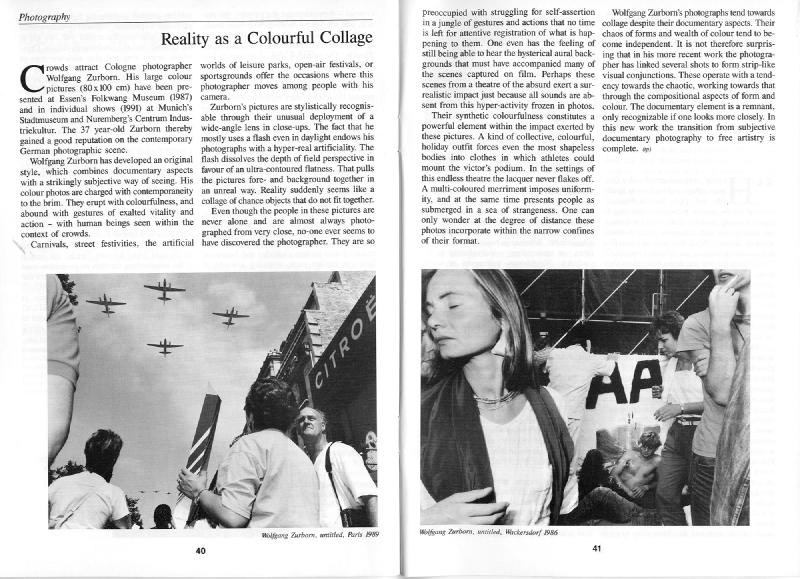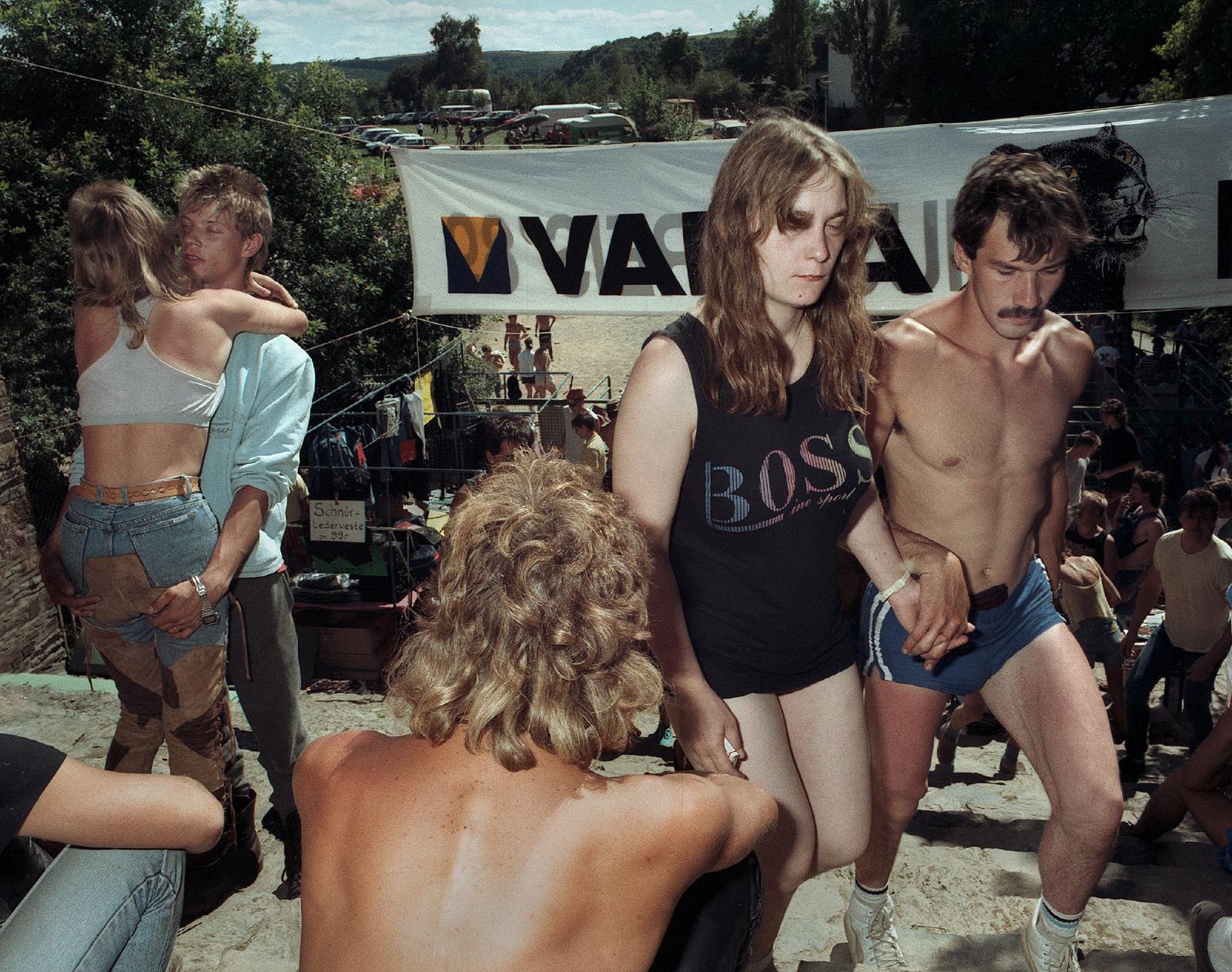Crowds
Crowds
| Solo exhibitions | ||
|---|---|---|
| 2023 |
Mittendrin Köln 1986-1993, fotografiert von Wolfgang Zurborn Neumarkt, Köln, Germany
28 Jun 2023
-
28 Aug 2023
|
|
| 2022 |
Crowds Internationales Fotofest Kaiserslautern Kaiserslautern, Germany |
|
| 2021 |
Crowds Urban Design Parcours, PhotoBookDummy Screening The PhotoBookMuseum, Köln, Germany |
|
Reviews
People Pictures – Picture People
by Jan Thorn Prikker

Crowds attract Cologne photographer Wolfgang Zurborn. His large colour pictures (80x100 cm) have been presented at Essen’s Folkwang Museum (1987) and in individual shows (1991) at Munich’s Stadtmuseum and Nuremberg’s Centrum Industriekultur. The 37 year-old Zurborn thereby gained a good reputation on the contemporary German photographic scene.
Wolfgang Zurborn has developed an original style, which combines documentary aspects with a strikingly subjective way of seeing. His colour photos are charged with contemporaneity to the brim. They erupt with colourfulness, and abound with gestures of exalted vitality and action – with human beings seen within the context of crowds. Carnivals, street festivities, the artificial worlds of leisure parks, open-air festivals, or sportsgrounds offer the occasions where this photographer moves among people with his camera.
Zurborn’s pictures are stylistically recognisable through their unusual deployment of a wide-angle lens in close-ups. The fact that he mostly uses a flash even in daylight endows his photographs with a hyper-real artificiality. The flash dissolves the depth of field perspective in favour of an ultra-contoured flatness. That pulls the pictures fore- and background together in an unreal way. Reality suddenly seems like a collage of chance objects that do not fit together.
Even though the people in these pictures are never alone and are almost always photographed from very close, no-one ever seems to have discovered the photographer. They are so preoccupied with struggling for self assertion in a jungle of gestures and actions that no time is left for attentive registration of what is happening to them. One even has the feeling of still being able to hear the hysterical aural backgrounds that must have accompanied many of the scenes captured on film. Perhaps these scenes from a theatre of the absurd exert a surrealistic impact just because all sounds are absent from this hyper-activity frozen in photos.
Their synthetic colourfulness constitutes a powerful element within the impact exerted by these pictures. A kind of collective, colourful, holiday outfit forces even the most shapeless bodies into clothes in which athletes could mount the victor’s podium. In the settings of this endless theatre the lacquer never flakes off. A multi-coloured merriment imposes uniformity, and at the same time presents people as submerged in a sea of strangeness. One can only wonder at the degree of distance these photos incorporate within the narrow confines of their format.
Wolfgang Zurborn’s photographs tend towards collage despite their documentary aspects. Their chaos of forms and wealth of colour tend to become independent. It is not therefore surprising that that in his more recent work the photographer has linked several shots to form stripe-like visual conjunctions. These operate with a tendency towards the chaotic, working towards that trough the compositional aspects of form and colour. The documentary element is a remnant, only recognisable if one look more closely. In this new work the transition from subjective documentary photography to free artistry is complete.

